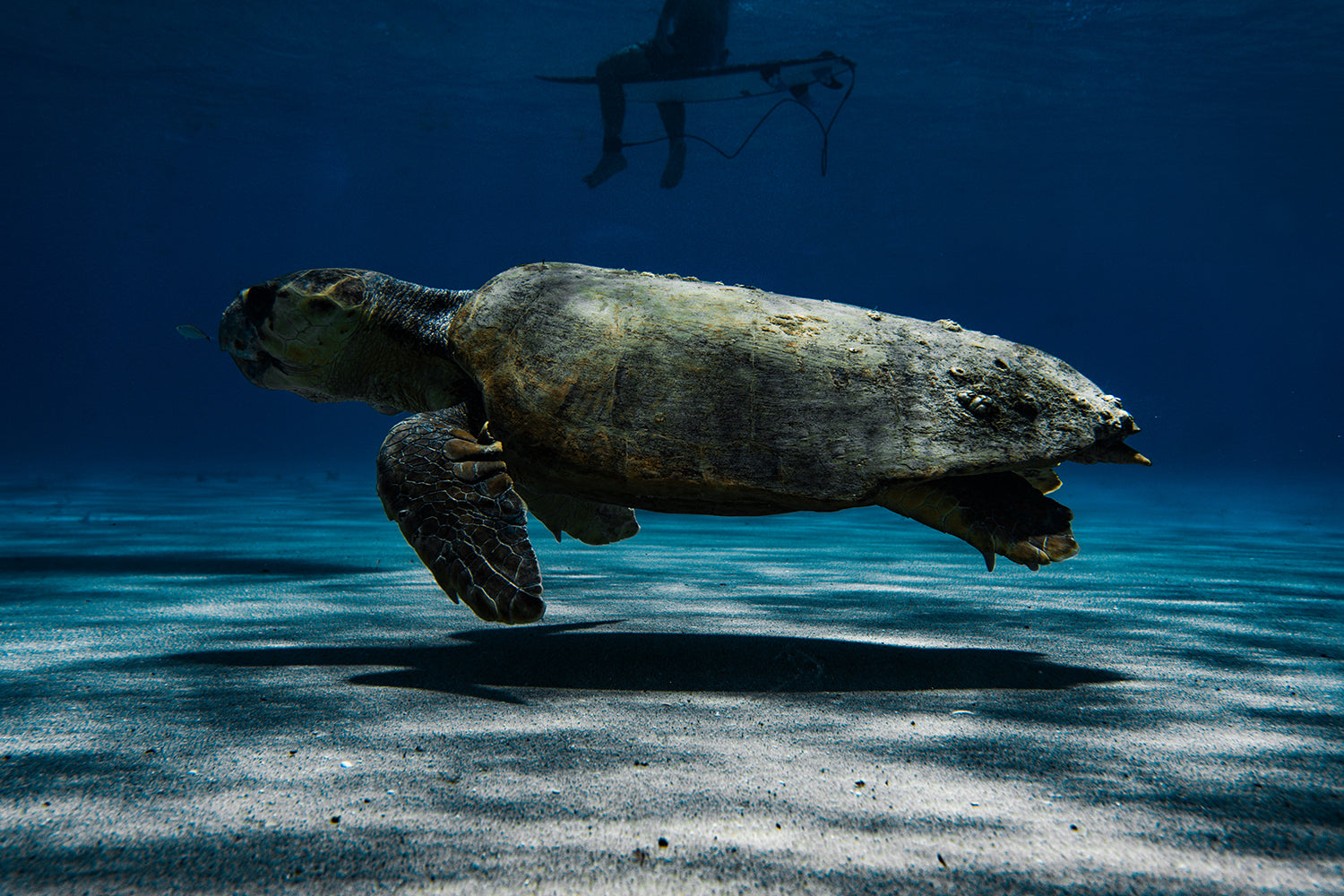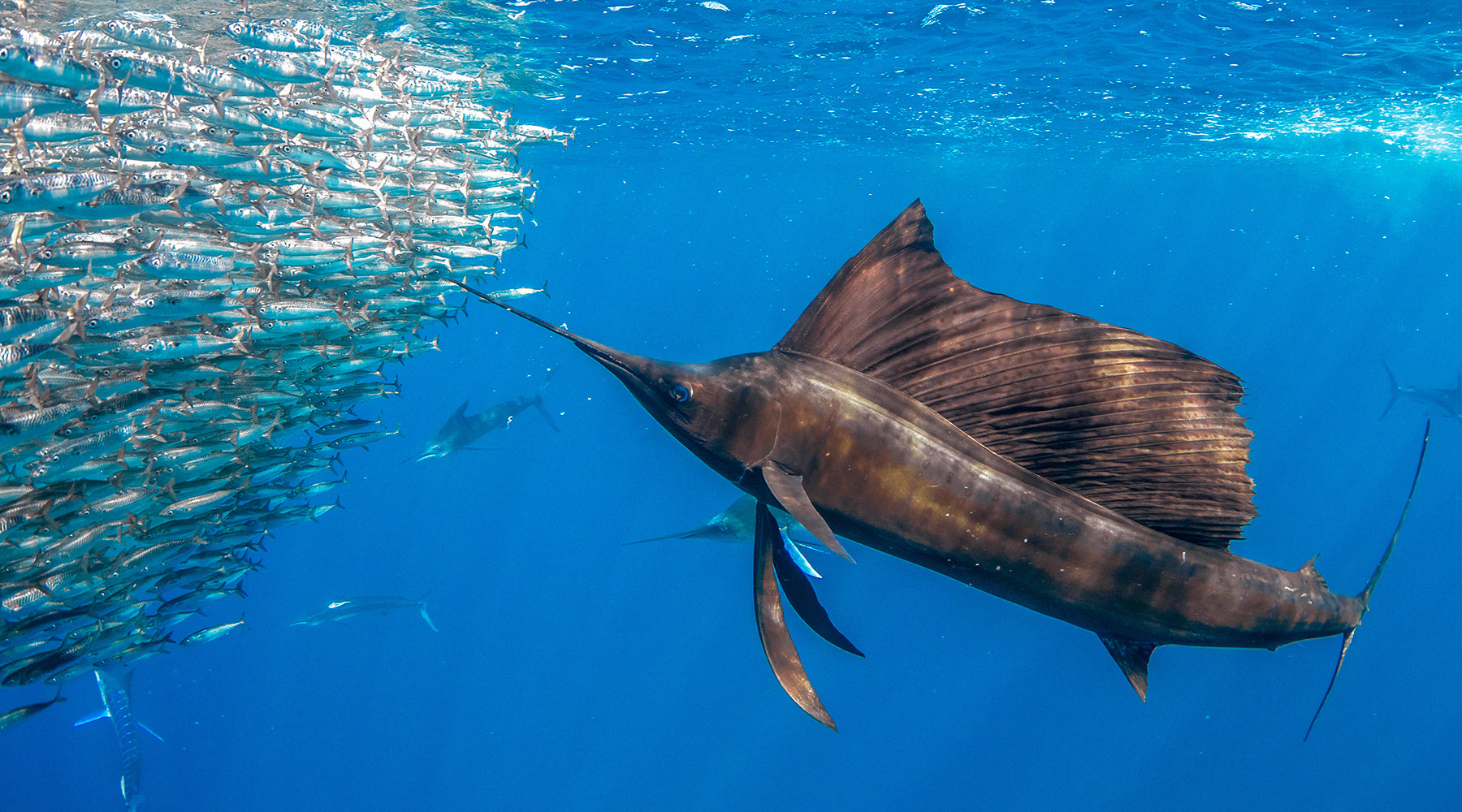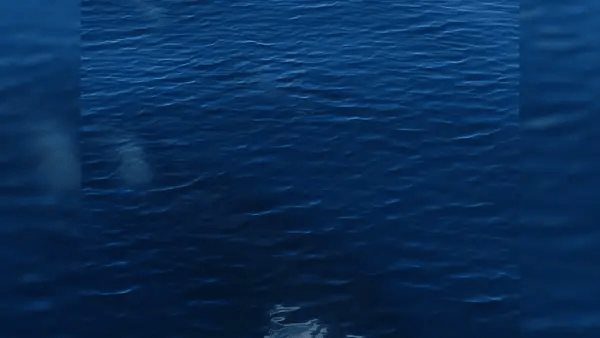7 MIN READ
6-26-2024
Guardians of the Coral Reef: Caribbean Reef Shark
Henry Bliss, 4ocean Story Producer
Embark on a journey beneath the ocean’s surface and learn more about the Caribbean Reef Shark.
Descending into the clear Caribbean waters, you become captivated by the vibrant coral reef teeming with life. Suddenly, a sleek Caribbean reef shark emerges from the shadows. Its powerful, graceful movements are mesmerizing.
The Caribbean reef shark (Carcharhinus perezii) is a prominent and fascinating species that inhabits the clear, warm waters of the western Atlantic Ocean, particularly around the Caribbean Sea and the Gulf of Mexico. Known for its sleek, streamlined body and graceful movements, this apex predator plays a crucial role in maintaining the ecological balance of coral reef ecosystems. As we dive deeper, we unveil the physical appearance, habitat, and diet of this species.

Physical Appearance
Caribbean reef sharks typically grow to about 2.5 meters (8.2 feet) in length, with the largest individuals reaching up to 3 meters (9.8 feet). They can weigh up to 70 kilograms (154 pounds). These sharks exhibit a dark gray or gray-brown dorsal side with a contrasting white underside, often featuring a subtle lateral band. Their body is streamlined, equipped with a rounded snout and wide pectoral fins, aiding in their agility and speed in the water.
Habitat
Geographic Range
The Caribbean reef shark is predominantly found in the western Atlantic Ocean, with a notable presence in the Caribbean Sea and the Gulf of Mexico. Their distribution extends from the southern coast of the United States down to northern South America, including the waters around the Bahamas, Cuba, and the Greater and Lesser Antilles. This range includes a variety of tropical and subtropical marine environments, providing diverse habitats for these sharks.
Preferred Habitat
Caribbean reef sharks are typically associated with coral reef ecosystems, which offer abundant food resources and shelter. They are most commonly found in coastal waters, particularly around coral reefs and atoll lagoons. These sharks prefer shallow waters, often ranging from 10 to 30 meters (33 to 98 feet) in depth. However, they have been observed at depths of up to 378 meters (1,240 feet), indicating a significant depth range adaptability.
Environmental Preferences
These sharks thrive in warm, clear waters where temperatures generally range from 24 to 28 degrees Celsius (75 to 82 degrees Fahrenheit). Coral reefs provide an ideal environment due to their structural complexity, which supports a high biodiversity of potential prey. The intricate reef structures also offer hiding spots and protection from larger predators.
Seasonal Movements
While generally considered resident species, some Caribbean reef sharks may exhibit seasonal movements. These movements are often linked to changes in water temperature, prey availability, and breeding cycles. During certain times of the year, sharks may migrate to different areas within their range to find optimal conditions for feeding and reproduction.

Behavior
Hunting and Feeding
Caribbean reef sharks are carnivorous predators that primarily feed on a variety of marine species including bony fishes, cephalopods (such as squid and octopus), and occasionally crustaceans. They are fierce hunters, using their streamlined bodies and sharp senses to locate and capture prey. These sharks often patrol the edges of coral reefs and use stealth and speed to ambush their prey, which may include reef fish like groupers, snappers, and parrotfish.
Social Structure
Caribbean reef sharks are typically solitary hunters, but they can also be found in small groups or aggregations, particularly around areas where food sources are abundant. These sharks may form loose social bonds and occasionally display cooperative behaviors, such as hunting in groups to take advantage of schooling fish or coordinated feeding activities at cleaning stations.
Reproduction
Reproduction in Caribbean reef sharks is viviparous, meaning females give birth to live young rather than laying eggs. After a gestation period of approximately one year, females typically give birth to a litter of 4-6 pups in shallow, protected areas of coral reefs or nearshore environments. These nurseries provide the young sharks with safety from larger predators and ample food resources as they grow.
Interaction with Cleaning Stations
Caribbean reef sharks are known to visit cleaning stations, where they interact with smaller species of cleaner fish. These cleaners remove parasites and dead skin from the sharks' bodies, providing a valuable service that contributes to the shark's overall health and hygiene. Cleaning stations are important social and ecological hubs within coral reef ecosystems.
Role in the Ecosystem
As apex predators, Caribbean reef sharks play a critical role in regulating the population of prey species within coral reef ecosystems. By controlling the abundance and behavior of reef fish populations, these sharks help maintain the health and diversity of coral reefs. Their presence is crucial for the overall balance and resilience of marine ecosystems in the Caribbean region.

How does plastic pollution impact Caribbean Reef Sharks?
Entanglement and Ingestion
Similar to all marine species, animals can become entangled in discarded fishing nets, lines, and other debris made of plastic. They may also mistake plastic items such as bags, packaging, and microplastics for food.
Habitat Degradation
Plastic debris can accumulate on coral reefs and in coastal areas where Caribbean reef sharks reside. This accumulation can smother coral colonies, block sunlight needed for photosynthesis, and introduce toxins and pathogens into the environment.
Habitat Degradation
Plastics in the marine environment can absorb and concentrate harmful chemicals from the surrounding seawater, such as persistent organic pollutants and heavy metals. When ingested by Caribbean reef sharks, these toxic substances can accumulate in their tissues and biomagnify through the food web.
Behavioral Changes
The presence of plastic debris in their environment can alter the natural behaviors of Caribbean reef sharks. They may avoid areas with high concentrations of plastic, leading to changes in their distribution patterns, feeding behaviors, and interactions with other marine species.

Caribbean reef sharks are iconic apex predators vital to the health and biodiversity of coral reef ecosystems in the western Atlantic Ocean. With their powerful bodies and graceful movements, they play a crucial role in regulating the populations of prey species like reef fish and maintaining ecosystem balance. However, these sharks face numerous threats, including overfishing, habitat degradation, climate change impacts, and pollution such as plastic debris. Conservation efforts focused on sustainable fishing practices, habitat protection, and reducing pollution are essential to safeguarding Caribbean reef sharks and preserving the vibrant coral reefs they call home. By addressing these challenges, we can ensure the continued survival of these majestic predators and maintain the resilience of the marine ecosystems they inhabit.
We’re always on the lookout for incredible stories from our community! Pitch yours to our team at stories@4ocean.com




